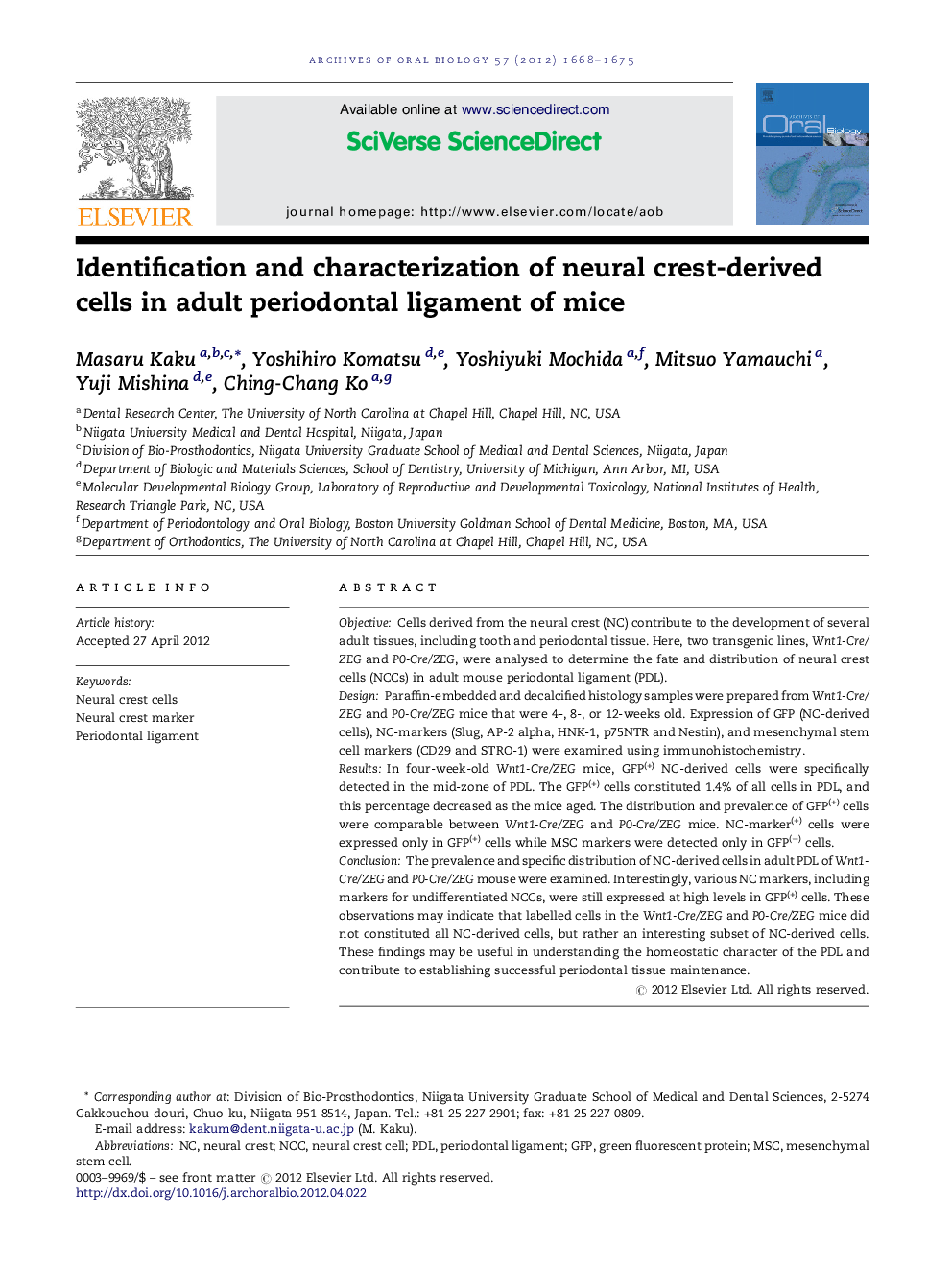| Article ID | Journal | Published Year | Pages | File Type |
|---|---|---|---|---|
| 6051934 | Archives of Oral Biology | 2012 | 8 Pages |
ObjectiveCells derived from the neural crest (NC) contribute to the development of several adult tissues, including tooth and periodontal tissue. Here, two transgenic lines, Wnt1-Cre/ZEG and P0-Cre/ZEG, were analysed to determine the fate and distribution of neural crest cells (NCCs) in adult mouse periodontal ligament (PDL).DesignParaffin-embedded and decalcified histology samples were prepared from Wnt1-Cre/ZEG and P0-Cre/ZEG mice that were 4-, 8-, or 12-weeks old. Expression of GFP (NC-derived cells), NC-markers (Slug, AP-2 alpha, HNK-1, p75NTR and Nestin), and mesenchymal stem cell markers (CD29 and STRO-1) were examined using immunohistochemistry.ResultsIn four-week-old Wnt1-Cre/ZEG mice, GFP(+) NC-derived cells were specifically detected in the mid-zone of PDL. The GFP(+) cells constituted 1.4% of all cells in PDL, and this percentage decreased as the mice aged. The distribution and prevalence of GFP(+) cells were comparable between Wnt1-Cre/ZEG and P0-Cre/ZEG mice. NC-marker(+) cells were expressed only in GFP(+) cells while MSC markers were detected only in GFP(â) cells.ConclusionThe prevalence and specific distribution of NC-derived cells in adult PDL of Wnt1-Cre/ZEG and P0-Cre/ZEG mouse were examined. Interestingly, various NC markers, including markers for undifferentiated NCCs, were still expressed at high levels in GFP(+) cells. These observations may indicate that labelled cells in the Wnt1-Cre/ZEG and P0-Cre/ZEG mice did not constituted all NC-derived cells, but rather an interesting subset of NC-derived cells. These findings may be useful in understanding the homeostatic character of the PDL and contribute to establishing successful periodontal tissue maintenance.
